Lesson
News / Blog
Other Menus
How to Put Away
How to Handle Video
001
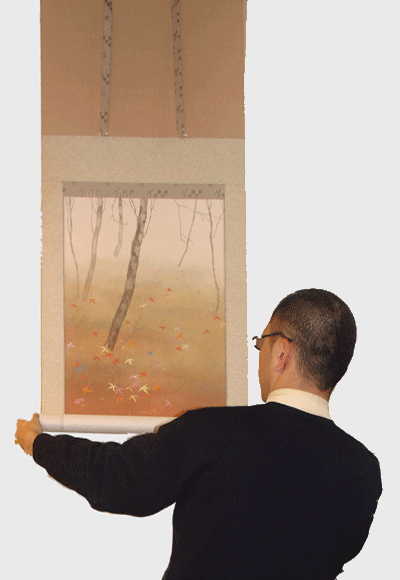
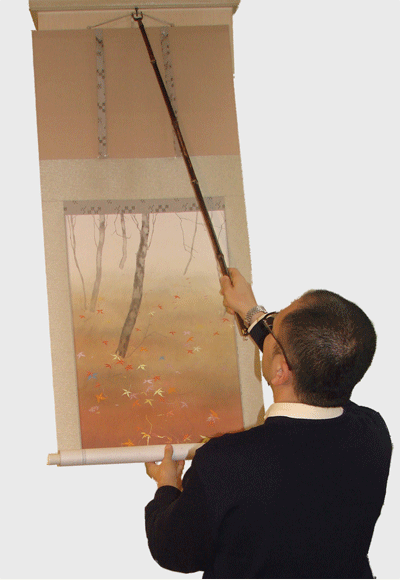
Hold the jikusaki with both hands, and roll up the kakejiku slowly.
When you roll it up around halfway, hold the kakejiku in your left hand and hold the yahazu (the forked edge of a bamboo stick) in your right hand. Then take the kakeo (a string attached to the top) off from the nail or hook.
002

Remove the yahazu, taking care not to fold the hanging scroll. Then roll the kakejiku to the end. Take care not to involve the fūtai in this process.
003

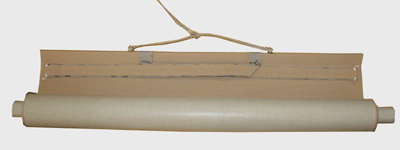
Bend the left-hand fūtai under the right-hand fūtai; if the fūtai is too long and protrudes from the side, bend it inside along the crease. After bending the left fūtai in, bend the opposite right fūtai in over the left fūtai.
004
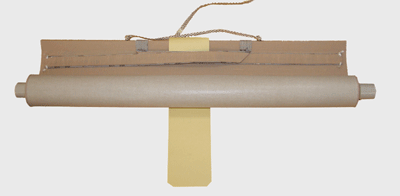

One end of the makigami is rolled together with the kakejiku, and the remaining part of the makigami is used to continue wrapping the scroll. When tying the kakejiku with a makio, it is important to wrap the makio around the makigami to prevent damage to the scroll.
005
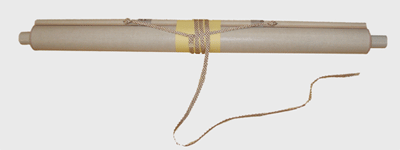
Hold the kakejiku in your left hand and the makio in your right hand. Wrap the makio around the kakejiku three times from left to right. The makio of the kakejiku, mounted a Buddhist painting or “myōgō” (the name of the Buddha) calligraphy, tends to be longer, so tie the makio around the kakejiku three times or more.
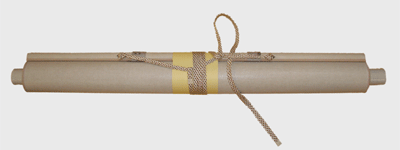
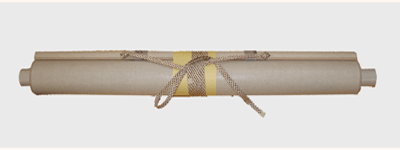
Then, make a ring with the remaining makio, pass it under the right side of the kakeo, and then under the left side.
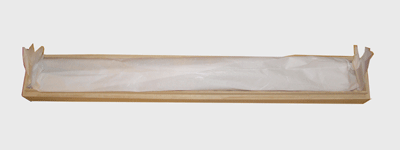
Wrap it with “momigami” (a piece of paper soften by crumpling) and put it in a “jiku-bako” (a box for kakejiku).
How to Handle
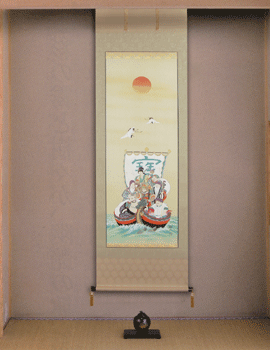 How to Display How to Display |
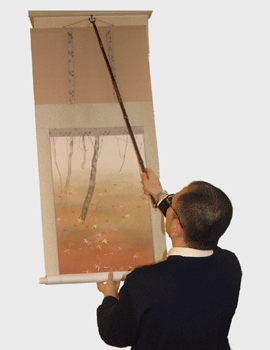 How to Put Away How to Put Away |
 Important Note Important Note |

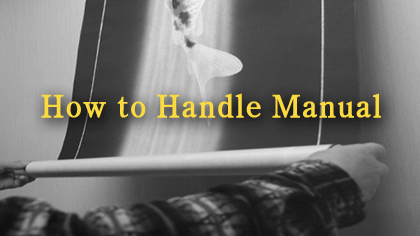 Download PDF: How to Handle Manual
Download PDF: How to Handle Manual